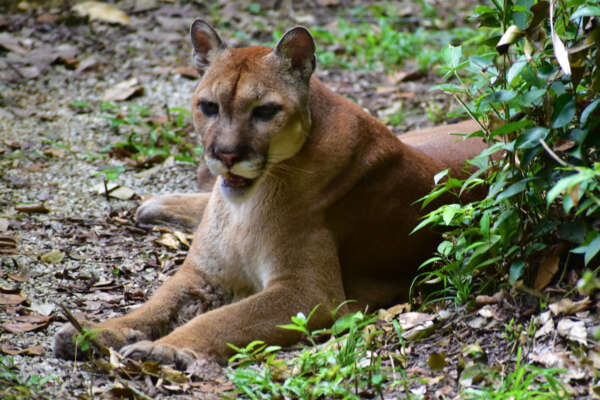
Puma
(Puma Concolor)
Spanish: Tigre de monte. Belizean Creole: Red Tiger. English: Mountain Lion, Cougar
The Puma has the largest distribution of any terrestrial mammal in the Western Hemisphere; from Canada to Chile. Individuals in Belize are much smaller in size compared to their counterparts in North and South America.
They are the second largest wildcat in Belize, and, although they grow almost as large as jaguars, they are not considered a “true” big cat, as they cannot roar. Their vocalizations include growls, shrieks, hisses, and purrs.
Puma territory commonly overlaps with other wildcat species, including jaguars with little evidence of conflict. Their preferred prey in Belize include deer, peccaries, and agoutis. Pumas have been known to cover their kill with scat, urine, or branches and leaves.
Unlike in North America, there have been no records of pumas attacking humans in Belize, and reports of attacks on pets or livestock and poultry are very rare.
Fun Facts
- Pumas have very powerful hindlegs, and can make a vertical jump of over 15 feet
- Their cubs are born with spots for camouflage, which they lose at around 3 months of age
- The earliest common ancestor of this species came to the Americas from Asia 8.5 million years ago by crossing the Bering Land Bridge.
Belize Zoo Trivia
The puma at the Zoo is named Princess.
